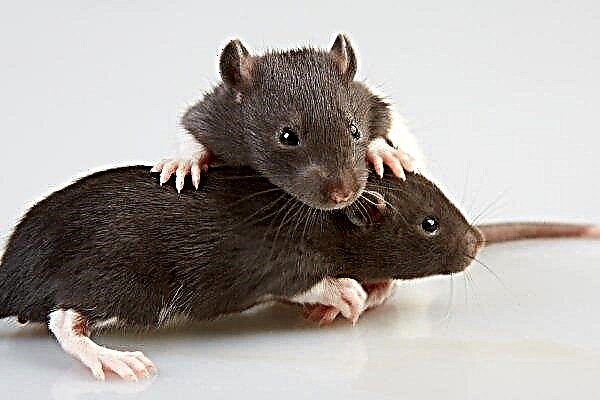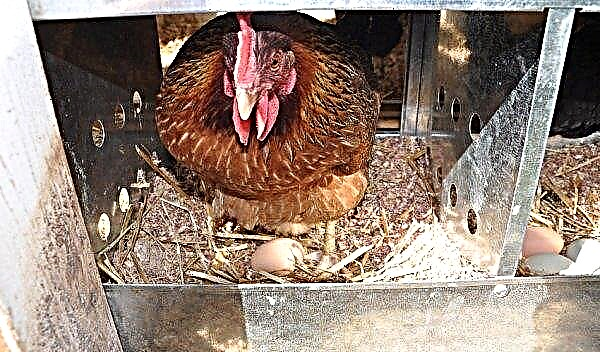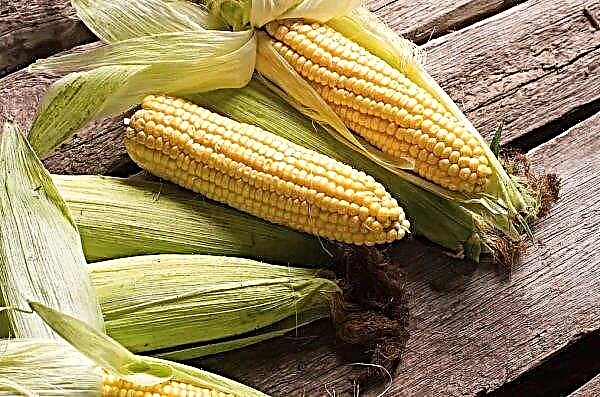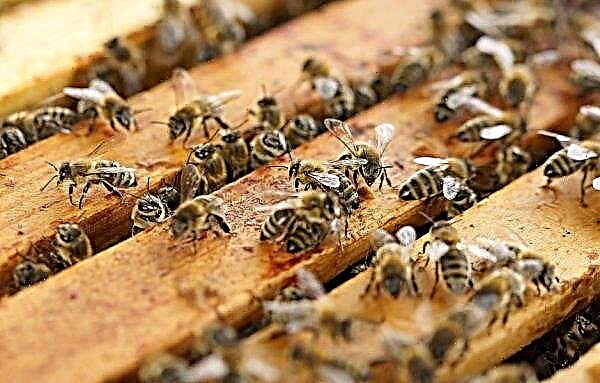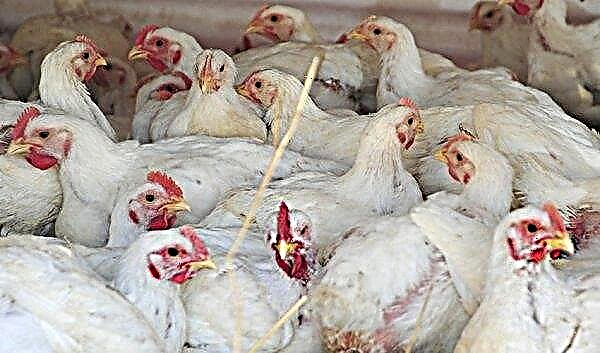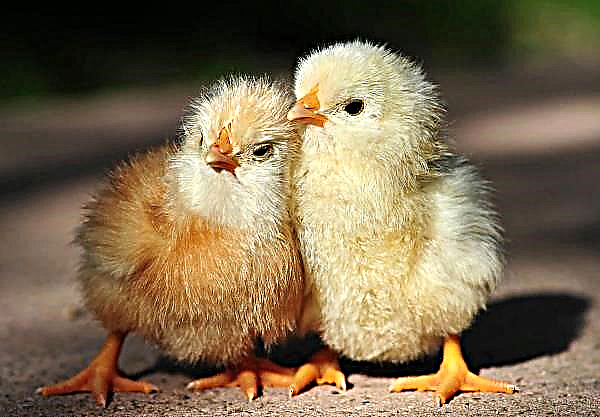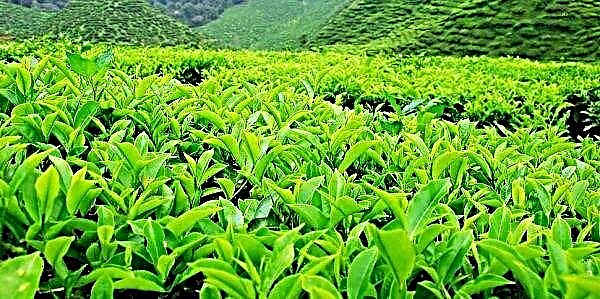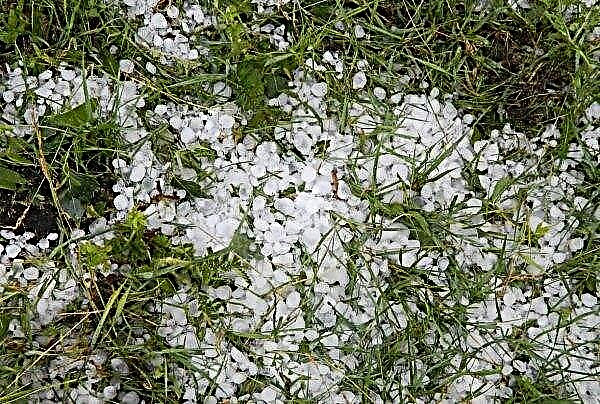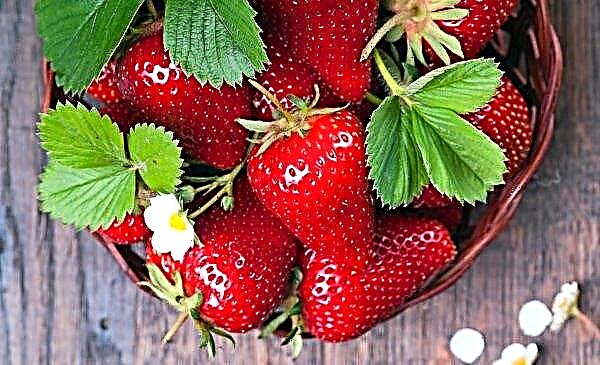Among all kinds of abundance of conifers and shrubs, a special place among gardeners is occupied by fir. This evergreen plant can successfully complement almost any composition or become its basis. The article describes in detail the main characteristics and description of one of the most common varieties of Korean fir, as well as the technology of planting and growing a tree.
Botanical Description
Korean fir Kohout's Icebreaker (Abies koreana 'Kohout's Icebreaker') is a tree species belonging to the genus Fir (Abies), a family of Pine (Pinaceae). This variety is, first of all, a dwarf representative of the flora, not exceeding 60 cm in height. By the 10th year, the plant grows no more than 30 cm. The crown shape of the plant is round, cushion-shaped, up to 1.5 m wide, while the average values do not exceed 80-100 cm.
Short and dense shoots densely located on the trunk form a crown. The bark of the trunk and branches in young specimens is distinguished by a light brown shade, which, as it grows, changes to a darker, grayish-brown color. The surface of the trunk and shoots is often smooth, but in trees over 20 years of age, numerous and deep cracks are observed over the entire surface of the outer covers. The maximum trunk diameter of an adult tree does not exceed 5–10 cm.
The needles of the variety are thick, sitting on the shoots persistently, slightly bending, with a blunt tip and a length of no more than 2–2.5 cm. A characteristic feature of this fir is the delicate tissue of the needles, this gives the coniferous cover elasticity and softness that is not characteristic of most representatives of the Pine family. The front side of the needles has a whitish or greenish-white hue, the reverse is a rich silver-blue color.
During the growing season, shoots form small cylindrical cones, up to 6 cm long and not more than 3 cm wide, with a slightly pointed apex. They grow exclusively up, which is a characteristic feature of all firs. In cones, egg-shaped seeds ripen with a thin, film-like and asymmetrical wing.
Origin of name
The name of the variety Cogouts Eisbreaker was coined by its author, a breeder from Germany, Yorg Kohout. In translation, the name of this plant sounds like "Kohout's Icebreaker", and the hybrid was not given by chance. The first word is, in fact, the name of the scientist who created this hybrid. The combination of the words "ice" (ice) and "breaker" (breaker) is included in the name due to its special appearance. The color of the crown imitates the needles crushing with crushed ice, which seemed to appear as the plant sprouted under the ice cap. This is displayed in this phrase as “the one that destroys ice” or “icebreaker”.
Today, there are several alternative names for this plant. Sometimes such firs in honor of the breeder scientist for simplification are called the general term "cohouts" or "cohmuts." Breeders popularly call this fir “kotomut”, which is also quite common.

Landing
Often, most varieties of Korean type fir (representatives of the Korean fir type) do not require complex and specific skills for planting. The tree is considered unpretentious and can be successfully planted with a minimum set of skills. But, in order to avoid any damage to the aerial and underground masses of Cogouts Icebreaker, as well as to create favorable conditions for the seedling to grow and develop, it is necessary to observe the specific planting technology.
Important! Fir is planted at a distance of at least 2.5 m from other tree plants (including group planting), as well as only in shaded areas with moist and well-drained soil.
To do this, it is enough to perform the following sequential steps:
- Determine the favorable period of the procedure, April or the end of August is suitable for this.
- Approximately 2 weeks before planting, prepare the site. To do this, dig a hole 60 × 60 cm in size and pour a bucket of water into it. When water is absorbed, a layer of fine gravel or gravel (about 5 cm thick) should be laid to the bottom. Then, half the hole should be filled with soil mixture of humus, clay, peat, sand and wood sawdust (3: 2: 1: 1: 1), fertilized with 250 g of nitrophosphate.
- 6 hours before planting, treat the seedling with the preparation "Fundazol", this will protect the plant from fungal infestations.
- Place the seedling in the hole so that its root neck is at the site level.
- Spread the roots of the plant, and then tightly fill all the cracks with a mixture of humus, clay, peat, sand and sawdust (3: 2: 1: 1: 1).
- Pour seedlings with clean and well-maintained water.

Fir Care
Proper care is a requirement that is put forward when growing fir to every gardener. Only a complex of their specific agrotechnical techniques and procedures can create a truly exquisite flowerbed, as well as provide a microclimate favorable for growth.
Video: How to plant and care for fir
Stamping
Neat and graceful shtamb is the most popular and esthetic form of a crown for each "komutsa". However, this will require a lot of time and labor.

Crown formation begins after the tree reaches the required height. First of all, you should pin the point of horizontal trunk growth. To do this, trim the tops and all vertically growing shoots, but no more than a third.
Next, remove the extra shoots near the root system, approximately to the middle. This will create a small and neat hat, suitable for further formation.
Subsequently, stamping is performed every season, giving the crown the desired shape and density. Do this procedure no more than 1 time per year, during April and not earlier than 2-3 years after planting a seedling.
Watering and feeding
Watering fir is performed throughout the entire growing season (April – November), not more than 1 time in 14 days. During the summer drought, the moisture rate is increased to 1-2 procedures per week. For this, depending on the age of the tree, 10 to 20 liters of water is required. Fir top dressing is done only from 2-3 years after planting and not more than 1 time per season (April). To do this, about 100–150 g of Kemira Universal mineral fertilizer is introduced into the trunk circle.
Did you know? The first attempts to introduce fir into the culture date back to the 7th – 6th millennium BC. e. This is evidenced by artifacts found in the area of the ancient Neolithic site Pazardzhik (the territory of modern Bulgaria).
Loosening and mulching
Loosening the trunk circle is carried out every time after watering and rains, but at least 1 time per week. At the same time, the depth of cultivation of the soil should not exceed 10-15 cm. To reduce the frequency of irrigation of the site and the number of loosening per season, it is recommended to mulch the trunk circle with needles, straw, hay, sawdust, etc. The mulch layer should be at least 10-15 cm. Update the mulch throughout the growing season, about 1 time per month.

Pruning
In addition to forming, the Cogouts Icebreaker variety also requires periodic pruning. It is done for sanitary purposes, in the early spring (throughout April) or late autumn (late October). All wilted and damaged branches are removed..
Did you know? It is believed that fir was the main building material from which the so-called "Trojan horse" was created. Thanks to him, the Achaeans managed to conquer Ancient Troy.
Possible diseases and pests
Varieties Korean fir is classified as a coniferous species resistant to pests and infections. This property is especially vividly observed if all the subtleties of planting the crop are observed. However, sometimes the tree may be affected. hermes, this parasite develops in the crown and leads to yellowing of the needles. To combat the pest, the plant is sprayed twice, with an interval of 14 days, with a solution of the “Antio” or “Rogor” preparation.
 As a prevention, spraying is carried out in spring (early April)
As a prevention, spraying is carried out in spring (early April)
Sometimes the green mass of a tree can be affected by a rust pathogen.. To overcome the infection, the affected parts of the shoots are cut and burned, and the places of the cuts are treated with garden var. After that, the crown and trunk of the fir tree twice, with an interval of 14 days, need to be treated with a 2% solution of Bordeaux mixture.
 To prevent rust, shoots are sprayed in early spring
To prevent rust, shoots are sprayed in early spring
Breeding
Like any gymnosperm plant, the species in question can be propagated by seed or cuttings. The simplest and most effective way to obtain new copies is the rooting of cuttings. Reproduction by seeds does not allow to preserve all the genetic characteristics of the variety, therefore it is not used.
In early April, cuttings 5-10 cm long are cut from healthy shoots. Each of them must have at least 1 apical kidney, as well as a “heel”. For this, each fragment is carefully broken off from the mother plant so that a small appendix about 1 cm perpendicular to the cuttings remains at the cut site.

Before planting in the soil, the heel is cleaned of burrs, after which the stalk is sprayed with a solution of Fundazol. Landing is carried out in a special fertile substrate prepared from equal parts of leafy soil, sand and humus. Germinate cuttings in room conditions, on the most illuminated windowsill, providing moderate watering (the soil should always be slightly moist). For the winter, containers with seedlings are placed in a cool place whenever possible.
 The rooting of cuttings takes place over a period of 2–3 years; therefore, they are planted in open soil only in the 3rd year.
The rooting of cuttings takes place over a period of 2–3 years; therefore, they are planted in open soil only in the 3rd year.
Use in landscape design
The unique coloring of the needles and the compact crown of the Cogouts Icebreaker variety made this plant popular among plant growers and professional landscape designers. A small tree is actively used to ennoble almost any composition, and is also grown on a flower bed as a central species.
Important! Fir must be limited from the neighborhood with a stalk and asterisk. The substances secreted by them inhibit the growth and development of conifers, which often leads to their death.
The most harmonious plant looks in:
- single and group coniferous plantings;
- rock gardens;
- rockeries;
- Japanese rock gardens;
- along garden paths.

Korean fir Cogouts Icebreaker is an example of an almost universal ornamental plant that can successfully complement any garden landscape. The unique color of the needles will allow the tree to both emphasize the basic elements of the flower bed and become its center. However, for this you should spend a lot of time and effort on a proper fit, as well as quality care. Without this, the decorativeness of the variety will be significantly reduced.

